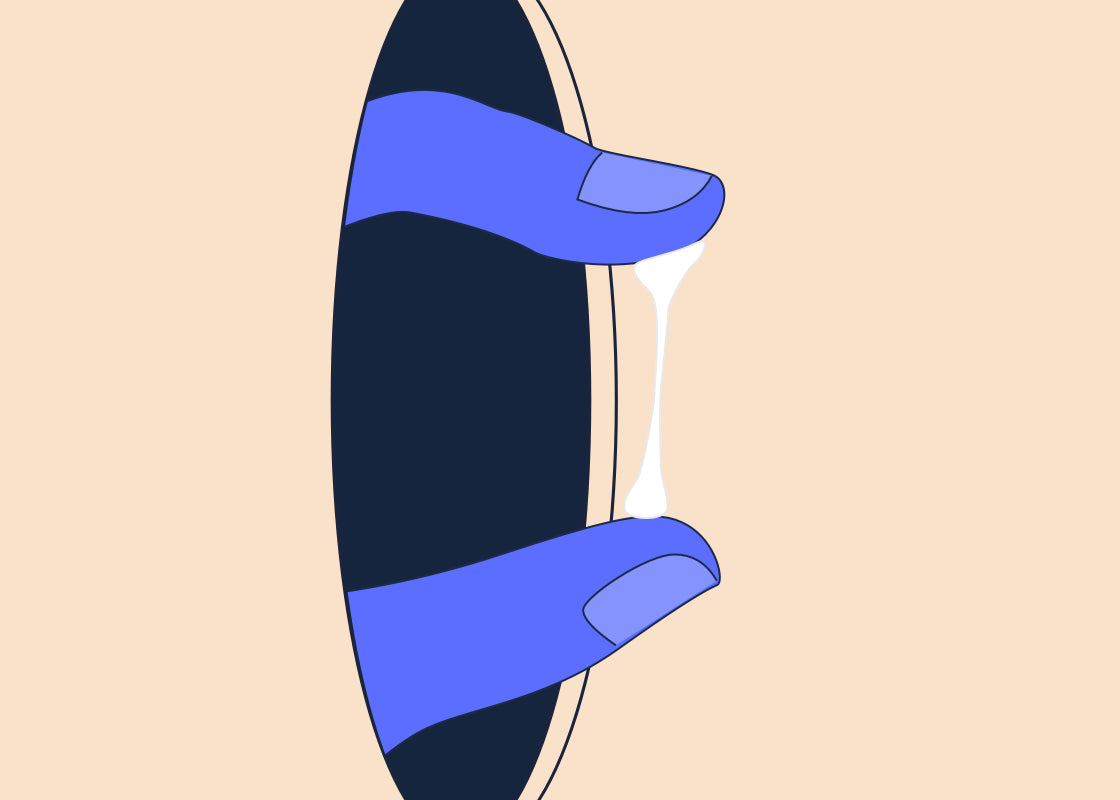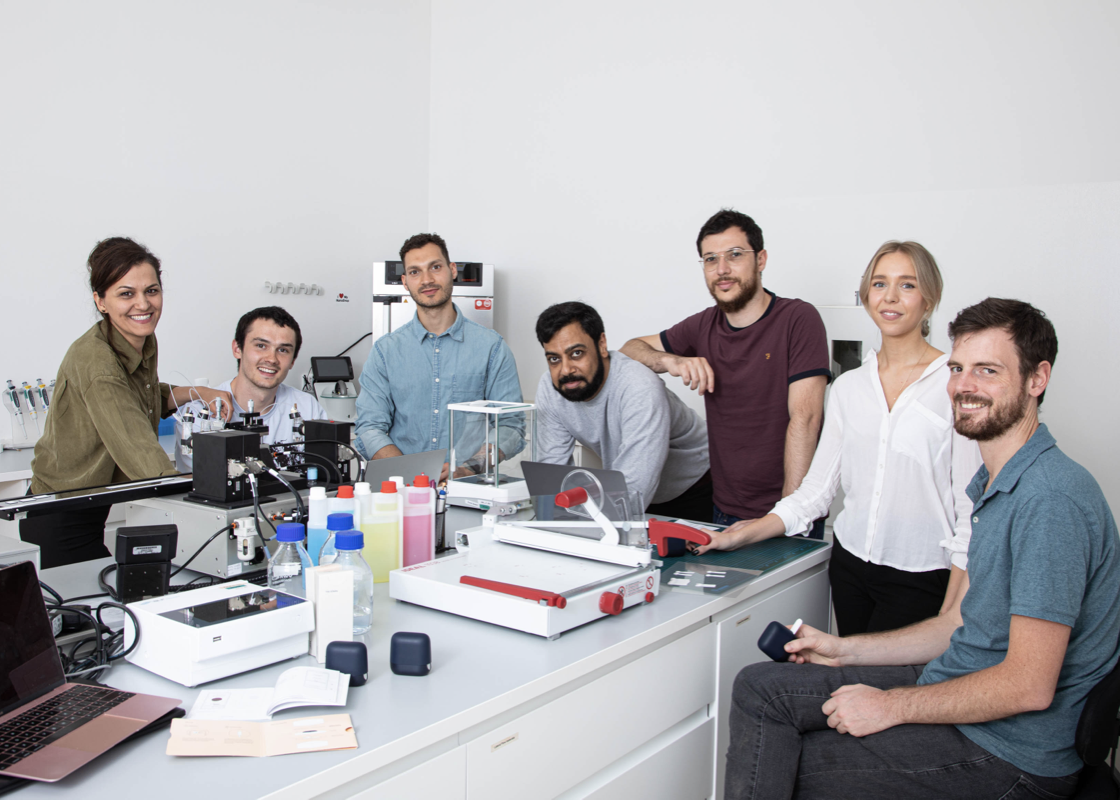A mum-to-be looks forward to carrying her baby. Still, many women worry about pregnancy and all the bodily changes that come with it. Here, we will answer all your questions for peace of mind. We will explore the exciting journey of pregnancy in both the mother and the baby. Let’s start with defining pregnancy and what occurs.
Pregnancy is when a fetus develops inside a woman's uterus or womb. A fetus begins development when the woman’s egg is released during menstruation and is fertilised by sperm. The fertilised egg comes from one of the two ovaries and attaches to the lining of the uterus during implantation [1]. Successful implantation leads to a pregnancy. In some cases, two eggs may be released from one or both ovaries resulting in twins. Sometimes, the fertilised egg (zygote) divides resulting in identical (monozygotic) twins.
So, how do you know if you are pregnant? There can be clear symptoms and confirmatory tests for detecting it, even in the early stages. Let us find out.
Early signs of pregnancy
A missed period for most women is the first sign of pregnancy [2]. Other common early signs are nausea, fatigue, breast tenderness, and mood swings [3]. However, not all pregnant women experience these symptoms. The symptoms vary, but usually, one or more symptoms are experienced.
Many women do a home pregnancy test or go to their doctor to confirm pregnancy after a missed period. The most common test for early pregnancy detection is the human chorionic gonadotropin (hCG) hormone test. Your doctor tests for the presence of this hormone by taking a blood or urine sample after a missed period. This hormone is specific to pregnancy as it is produced by a woman's placenta at the time of implantation [4].
Length of the gestation or pregnancy
Pregnancy is approximately nine months or 40 weeks (280 days). The time is measured from the last menstruation to the delivery [5]. Not all pregnancies last for 280 days; they can vary in length. Pregnancy is divided into three trimesters of 12 or 14 weeks each. The fetus goes through significant developmental changes during each of the trimesters. Noticeable changes can start right after conception in both the fetus and the mother.
Stages of pregnancy
The three trimesters or stages of pregnancy manifest momentous developmental changes in the fetus and the mother's body. Let’s look at the developmental phases, showing week-by-week progress.
For the baby:
Trimester 1
The first trimester starts from week 1 to week 12. During this time, many rapid changes occur as the fetus begins development [6].
-
Week 1
This is called the germinal stage of development. It is the time between the egg and sperm fertilisation and the implantation. After fertilisation, a single cell (zygote) undergoes multiple cell divisions. It reaches a stage called the blastocyst five to six days after fertilisation [7].
-
Week 2
The embryo at the blastocyst stage is ready for implantation in the uterus lining. The implantation process is completed in the second week of development [7,8]. At this time, the baby is a ball of rapidly dividing cells and is officially now called an embryo.
-
Week 3
In the third week, three germ layers form in the embryo: the endoderm (inner layer), the mesoderm (middle layer), and the ectoderm (outer layer). The central nervous system (the brain and spinal cord) starts to develop at this point as well [8].
-
Week 4
In week 4, the nervous system is still developing, and the ectoderm layer grows to form the baby's brain and face structures [8].
-
Week 5
This is an exciting week where the embryo develops a tiny heart that starts to beat! The circulatory system is also developing by this point [9].
-
Week 6
Week 6 is dedicated to organogenesis or organ development. Here, tissues begin to grow and differentiate into specific organs.
-
Week 7
Your baby is growing fast as organ development continues. The circulatory system is adequately developed, and blood flow begins. The lungs and gastrointestinal system are also now developing [10].
-
Week 8
Organ development continues in week 8. At the end of this week, your baby is no longer considered an embryo, but a fetus. This fetal period lasts until birth. Organs have now been developed and are ready for additional growth and maturation [10].
-
Week 9
At the end of the ninth week, your baby is now around 2.4 cm with developed internal organs. The anatomical structure of the fetus begins to appear more clearly, such as the eyes, nose, ear, and mouth [11]. It is quite exciting to imagine!
-
Week 10
By week 10, the joints, bones, muscles, and ligaments have grown and matured further [12].
-
Week 11
Changes continue to take place in week 11 and the webbing between the fingers and toes (interdigital pads) begins to degenerate [13].
-
Week 12
This is the end of the first trimester. The fetus is now fully formed and ready to grow further towards maturation. This week, the fetus is around 5.3 cm long and weighs about 58 grams.
Trimester 2
With all organs now formed in the fetus, it starts growing in length and weight. The weight will multiply in the next few months. During the 2nd trimester, the following exciting foetal developmental changes occur:
-
The fetus develops reflexes and begins sucking and swallowing
-
The fetus starts following sleep and wakefulness cycles
-
Hair starts growing on the fetus' head
-
Toeprints and fingerprints have formed
Most importantly, around the 17th week, a phase called the pseudoglandular phase of the lungs ends. However, the lungs are still not yet ready for gaseous exchange (oxygen and carbon dioxide), therefore, respiration is not yet possible. In week 24, tiny spaces in the lungs start widening and growing in length, beginning the saccular stage of lung development. Around week 25, lung development has advanced and respiration becomes possible [14, 15]. This means at the end of the 2nd trimester, the baby can survive outside the uterus with an approximately 94% survival rate with adequate intensive care support [16].
Trimester 3
During this final trimester, the fetus continues to grow in size and weight. The brain, lungs, kidneys, and other organs continue to develop and mature. The fetus’s skin is covered by a creamy protective coating called vernix caseosa [17]. The fetus can now cry and sucks its thumb!
The lungs completely mature in the 38-40 weeks of the third trimester [18]. The fetus can hear you in the last weeks (28 weeks and onwards) of the third trimester. Moreover, the baby can respond to sounds at this time [19]. Talk to your baby. They know it’s you!
For the mother:
During pregnancy, the mother’s body goes through many physiological and anatomical changes to accommodate and nurture the growing fetus. These changes start after conception and involve every organ of her body [20]. These changes are temporary during a normal pregnancy.
Trimester 1
With the start of pregnancy, many changes occur in the mother's body, including:
-
Increased estrogen and progesterone hormone levels cause an upsurge of melanin production, particularly in already pigmented areas such as the genitals, nipples, and areolas. Also, freckles and recent scars get darker and expand during pregnancy [21].
-
The breasts usually increase in size, tenderness occurs, and veins become prominent [22,23].
-
The uterus starts growing primarily due to increased estrogen hormone signals in early pregnancy. It grows from 70 grams to 1100 grams with volume capacity rising from 10 millilitres to 5 litres [24].
-
The growing uterus presses against the mother's bladder, irritating it and causing the need for frequent urination. The bladder capacity is still fairly normal during the 1st trimester, holding about 410 ml of urine [25].
-
A mother-to-be may experience mood swings due to an upsurge in hormone levels, similar to the premenstrual syndrome (PMS) some women experience just before their periods.
-
Clothing may start to feel tight due to the increased waist and breast size. Usually, a woman gains 0.5 to 2 kg of weight in the first trimester due to the changes her body is experiencing while it is nurturing the fetus [26].
-
Body temperature during the early stages of pregnancy may rise and can also be considered an early indication of pregnancy [27].
-
Blood pressure may be decreased in the first and second trimesters [20].
Trimester 2
The second trimester involves many significant changes in the mother’s body:
-
A mother may feel an increase in appetite and feel hungry almost always. This hunger urge is expected in a healthy pregnancy.
-
During the 16-22 weeks of pregnancy, a woman may feel the delicate movements of the fetus. This first fetus movement is called quickening [28].
-
Around the 20th week, the uterus grows in height up near the mother’s umbilicus (belly button) and the pregnancy becomes more visible [29].
-
During this trimester, the mother’s body weight may also rise by 0.45kg per week [30].
Trimester 3
The third trimester becomes tricky for some women as their delivery nears. The fetus grows significantly and occupies a lot of space in the abdominal cavity. As this happens, the mother might have difficulty sleeping comfortably and taking deep breaths. The following symptoms and bodily changes occur:
-
Urination frequency increases during the last trimester as the pressure exerted by the uterus on the bladder increases. The bladder capacity during this trimester is reduced to around 272 ml [25]. Women are often advised to go for urinalysis in the last stages of pregnancy to help catch complications. Urinalysis is an important test that evaluates kidney and bladder infections as well as gestational diabetes and pre-eclampsia.
-
Blood pressure that decreases in the first and second trimester typically returns to non-pregnant levels in the third trimester [20].
-
Oedema Fluid retention (oedema) is the most common complaint by women in this trimester. A mother may experience swelling in the hands, feet, ankles, and face as fluid is retained [31].
-
Many women experience random false labour pains called Braxton-Hicks contractions [32]. This is the body’s way of preparing the mother for childbirth.
-
Visible stretch marks may appear on the growing abdomen, breast, and thighs. Many pregnant women also suffer from dry and itchy skin.
-
Body temperature may rise as the fetus's metabolism radiates heat [33].
-
Average weight gain slows down to 0.4kg per week [30].
-
Estrogen rises to the highest level and progesterone levels become 7 times greater towards the end of pregnancy compared to the normal levels during pregnancy [34].
End of the pregnancy
Now, not all babies are born at 280 days. There are specific terminologies based on the duration of the gestation or pregnancy period.
-
Early term: babies born from the start of the 37th week to the end of the 38th week are titled early term.
-
Full-term: babies born between the 39th and 40th week are considered full-term.
-
Late-term: babies who are born in the 41st week are called late-term.
-
Post-term: any baby born in the 42nd week or later is considered post-term [35].
4th trimester
The fourth trimester is the 12-week period that starts after delivery known as the post-partum period. This time is crucial for both the mother and the baby’s short- and long-term well-being. Some women may experience low mood and mild to severe postpartum depression during this time. While this is normal, it requires great care and emotional support. The 4th trimester usually ends after about 8 weeks as the mother returns to her normal, pre-pregnant stage [36].
References
1. Oliver R, Basit H. Embryology, Fertilisation. 2019.
2. Keettel W. The missed menstrual period. Postgraduate Medicine. 1977;61(1):251-2, 4, 6.
3. Foxcroft KF, Callaway LK, Byrne NM, Webster J. Development and validation of a pregnancy symptoms inventory. BMC pregnancy and childbirth. 2013;13(1):1-9.
4. Betz D, Fane K. Human chorionic gonadotropin (HCG). 2018.
5. Edwards KI, Itzhak P. Estimated Date of Delivery. 2019.
6. Anderson J, Ghaffarian KR. Early pregnancy diagnosis. 2020.
7. Khan YS, Ackerman KM. Embryology, Week 1. StatPearls [Internet]: StatPearls Publishing; 2021.
8. Rehman B, Muzio MR. Embryology, Week 2-3. StatPearls [Internet]: StatPearls Publishing; 2021.
9. Valenti O, Di Prima FA, Renda E, Faraci M, Hyseni E, De Domenico R, et al. Fetal cardiac function during the first trimester of pregnancy. Journal of prenatal medicine. 2011;5(3):59.
10. Donovan MF, Cascella M. Embryology, Weeks 6-8. StatPearls [Internet]: StatPearls Publishing; 2020.
11. Sachdeva P, Patel B, Patel B. Drug use in pregnancy; a point to ponder! Indian journal of pharmaceutical sciences. 2009;71(1):1.
12. Van Heest AE. Congenital disorders of the hand and upper extremity. Pediatric Clinics. 1996;43(5):1113-33.
13. Raszewski JA, Singh P. Embryology, Hand. 2019.
14. Warburton D, El-Hashash A, Carraro G, Tiozzo C, Sala F, Rogers O, et al. Lung organogenesis. Current topics in developmental biology. 2010;90:73-158.
15. Schittny JC. Development of the lung. Cell and tissue research. 2017;367(3):427-44.
16. Stoll B, Hansen N, Bell E, Walsh M, Carlo W, Shankaran S, et al. Human Development Neonatal Research NetworkTrends in care practices, morbidity, and mortality of extremely preterm neonates, 1993-2012. JAMA. 2015;314:1039-51.
17. Singh G, Archana G. Unraveling the mystery of vernix caseosa. Indian journal of dermatology. 2008;53(2):54.
18. Bates E, Rouse DJ, Mann ML, Chapman V, Carlo WA, Tita AT. Neonatal outcomes after demonstrated fetal lung maturity prior to 39 weeks of gestation. Obstetrics and gynecology. 2010;116(6):1288.
19. Querleu D, Renard X, Versyp F, Paris-Delrue L, Crèpin G. Fetal hearing. European Journal of Obstetrics & Gynecology and Reproductive Biology. 1988;28(3):191-212.
20. Soma-Pillay P, Nelson-Piercy C, Tolppanen H, Mebazaa A. Physiological changes in pregnancy: review articles. Cardiovascular journal of Africa. 2016;27(2):89-94.
21. Vora RV, Gupta R, Mehta MJ, Chaudhari AH, Pilani AP, Patel N. Pregnancy and skin. Journal of Family Medicine and Primary Care. 2014;3(4):318.
22. Khan YS, Sajjad H. Anatomy, Thorax, Mammary Gland. 2019.
23. Motosko CC, Bieber AK, Pomeranz MK, Stein JA, Martires KJ. Physiologic changes of pregnancy: A review of the literature. International Journal of Women's Dermatology. 2017;3(4):219-24.
24. Pascual ZN, Langaker MD. Physiology, Pregnancy. StatPearls [Internet]: StatPearls Publishing; 2021.
25. Sangsawang B, Sangsawang N. Stress urinary incontinence in pregnant women: a review of prevalence, pathophysiology, and treatment. International urogynecology journal. 2013;24(6):901-12.
26. Kominiarek MA, Peaceman AM. Gestational weight gain. American journal of obstetrics and gynecology. 2017;217(6):642-51.
27. Steward K, Raja A. Physiology, Ovulation And Basal Body Temperature. StatPearls [Internet]: StatPearls Publishing; 2021.
28. Bryant J, Jamil RT, Thistle J. Fetal movement. StatPearls [Internet]: StatPearls Publishing; 2021.
29. Krywko DM, Toy FK, Mahan ME, Kiel J. Pregnancy Trauma. 2017.
30. Luke B. Nutrition during pregnancy: Part i, weight gain; part ii, nutrient supplements. JAMA. 1991;265(2):281-2.
31. Tanveer F, Shahid S. Frequency of lower extremity edema during the third trimester of pregnancy. Age. 2015;25:4.00.
32. Raines DA, Cooper DB. Braxton Hicks Contractions. 2017.
33. Chersich MF, Pham MD, Areal A, Haghighi MM, Manyuchi A, Swift CP, et al. Associations between high temperatures in pregnancy and risk of preterm birth, low birth weight, and stillbirths: systematic review and meta-analysis. bmj. 2020;371.
34. Bonillas CA, Feehan R. Normalising the changes experienced during each trimester of pregnancy. The Journal of perinatal education. 2008;17(1):39.
35. Bhat R, Kushtag P. A re-look at the duration of human pregnancy. Singapore medical journal. 2006;47(12):1044-8.
36. Lopez-Gonzalez DM, Kopparapu AK. Postpartum Care Of The New Mother. 2020.




